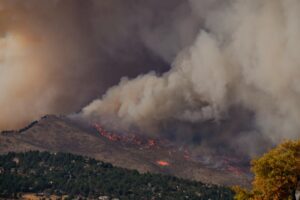Introduction
Tropical Storm Dexter: Atlantic hurricane season is in full swing, and tropical systems are making headlines once again. For those living along the U.S. East Coast and in the broader Southeast, staying informed about developing storms is crucial for safety and preparedness. The spotlight this week is on Tropical Storm Dexter, the latest named system in the 2025 Atlantic hurricane season. This comprehensive guide breaks down everything coastal residents need to know about Dexter’s formation, track, forecasted impacts, and essential hurricane preparedness tips.
What Is Tropical Storm Dexter?
Tropical Storm Dexter developed from a low-pressure area known as Invest 95L, which lingered off the Southeast U.S. shoreline over the first weekend of August 2025. Meteorologists began closely monitoring this system as it drifted through warm Atlantic waters and encountered relatively low wind shear—prime conditions for tropical development.
By early Monday, August 4, 2025, the National Hurricane Center (NHC) confirmed that Dexter had attained tropical storm status, with maximum sustained winds around 40mph. As is common with such systems, Dexter quickly became a focus for weather models and coastal emergency managers 123.
Current Track and Prognosis
As of the latest updates, Tropical Storm Dexter is located about 300 miles west-northwest of Bermuda and is moving generally east-northeast. Spaghetti models, which combine different forecasting paths, overwhelmingly suggest that Dexter will remain offshore, steering clear of the U.S. mainland. The primary impacts are expected to be felt over open water, reducing direct threats to populated areas 34.
Forecasts indicate that Dexter is unlikely to intensify significantly due to marginal environmental conditions and its current path. Nevertheless, residents along the coast should always keep an eye on tropical forecasts and emergency alerts in the event of changes.
Potential Impacts for U.S. Coastal Residents
Fortunately, Dexter’s current forecast keeps the storm out at sea, presenting minimal direct impacts for U.S. coastal communities. Still, it’s important to understand the secondary effects a nearby tropical storm can cause:
- Increased Surf and Rip Currents: Dexter, even while offshore, may contribute to rougher seas and stronger rip currents, especially along the mid-Atlantic and Southeast beaches.
- Rainfall Patterns and Flooding: While Dexter itself is not forecast to bring heavy rain to the U.S., a stalled frontal boundary across parts of the Southeast—from Alabama to Georgia and northern Florida—continues to bring periods of heavy rainfall and localized flooding. This rainfall is driven more by the frontal system rather than the tropical storm, but the interaction can enhance rainfall in some areas 12.
- Maritime Interest: Mariners and shipping interests should remain cautious, as Dexter’s tropical storm-force winds will make open ocean travel hazardous.
The Bigger Picture: A Busy Start to August
Dexter is the fourth named storm in the Atlantic this year, forming right as sea surface temperatures peak and wind shear decreases—conditions that historically spike hurricane activity. The NHC and other meteorological organizations are also watching a developing tropical wave emerging from Africa, underscoring that early August is only the beginning of peak storm season.
Hurricane Preparedness Tips: Staying Ready
Regardless of Dexter’s minimal direct threat, now is a critical reminder for all coastal residents to review their hurricane preparedness plans:
- Monitor Reliable Sources: Always rely on trusted information from the National Hurricane Center, local weather services, and emergency management authorities.
- Check Your Emergency Kit: Ensure you have at least a three-day supply of water and non-perishable food, flashlights, batteries, and necessary medications.
- Review Evacuation Routes: Know your local evacuation routes and have a plan for pets, elderly family members, and anyone with special needs.
- Secure Your Property: Trim trees and secure loose outdoor items that could become projectiles in high winds.
Final Thoughts
While Tropical Storm Dexter appears unlikely to pose a severe threat to the U.S. mainland, its development is a timely reminder of the importance of readiness and vigilance. Hurricane season is far from over, and each new storm offers lessons in preparation. Stay safe, stay informed, and always heed the advice of weather professionals and emergency officials for the best protection during severe weather events 1234.







